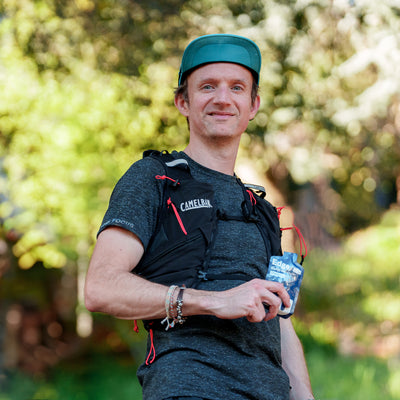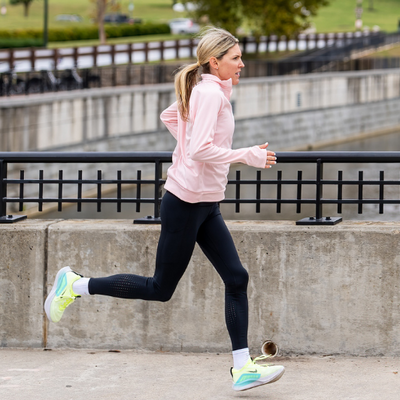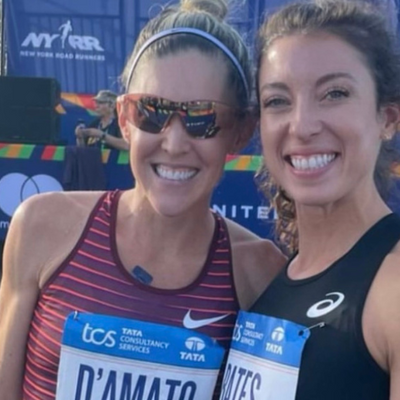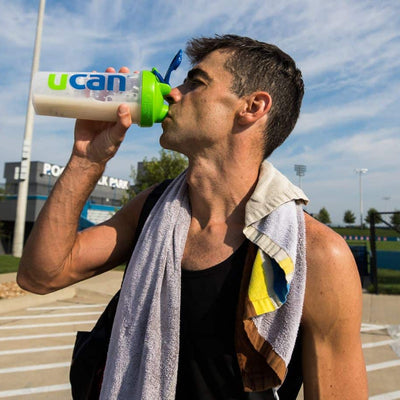Tables of Contents:
You don’t need to be a professional athlete to benefit from the core principles of performance nutrition. Even for a recreational athlete or workout enthusiast who’s interested in improving exercise and sports performance, paying attention to the combination of macronutrients in your diet as well as vitamins, minerals, and fluids, can enhance your physical gains and mental focus. Understanding the right foods to eat, along with the ideal timing and proportions, can help you achieve a range of goals—like having more energy for your afternoon run, lifting more weight in the gym or outsmarting your opponent on the tennis court. In his work with elite and everyday athletes, Bob Seebohar, a board-certified specialist in sports dietetics, customizes the ideal combination of foods to ensure his clients are optimally fueled for training and competition. “Performance nutrition is maintaining a daily nutrition and nutrient-timing system that supports the increased energy demands of exercise training,” explains Seebohar. According to a growing body of scientific research, a well-rounded nutritional plan can positively impact athletic performance, body composition, and promotes a healthy lifestyle.
The Basics of Performance Nutrition
Performance nutrition is not just about what you eat before, during and after a workout. “Eating for health is the cornerstone of any performance nutrition plan,” says Seebohar. When it comes to daily nutrition that supports long-term metabolic health, he advises most people consume a 1:1 or 2:1 ratio of carbohydrates to protein for optimal blood sugar control, the foundation of an effective performance nutrition plan. "I'm not particular about what an athlete should eat from the minutest level. We just need to eat carbs, protein and fat together to optimize blood sugar 90 percent of the time throughout the day, which we know has an optimal effect on energy levels, body weight, body composition, cognitive health and proper development for young athletes." “Protein is, hands down, the best blood sugar balancing and satiating nutrient one can eat,” says Julie Burns, a SportFuel® integrative sports dietitian and the Chicago Blackhawks team nutritionist. She suggests nutrient-dense protein options like grass-fed beef, wild-caught cold-water fish, hard-boiled eggs, and turkey. Meanwhile, sugar and carbohydrates have the largest effects on blood sugar, especially processed ones. To control blood sugar as much as possible, choose whole, unprocessed complex carb sources from vegetables, nuts, whole grains, lentils, and beans. “Eating a variety of colorful plant foods will also help you get the micronutrients—vitamins and minerals—you need," says Burns, who suggests pairing your carbs with protein and fat to elicit the best blood sugar response
How Nutrition Provide Steady Energy for Exercise When you consume carbs, they are broken down into glucose, which is the primary source of energy for exercise. Glucose that isn’t immediately needed is stored as glycogen in the liver and muscles. During a workout, the body first pulls glucose from your bloodstream for fuel and then taps into the stored glycogen. However, not all carbs are created equal. Choosing simple (fast) carbs before exercise, like a sugary sports drink or snack, is a common strategy but it’s not the most effective when it comes to peak exercise performance. “Eating or drinking something with fast carbs before exercise can cause sudden hypoglycemia (low blood sugar) during exercise, resulting in fatigue,” says Catherine Yeckel, Ph.D., a human metabolism and nutrition researcher and an assistant clinical professor at Yale School of Public Health. “This situation often requires the person to stop exercising and ingest more fast carbs to counter the drop — a vicious cycle.” For optimal performance and energy, eat a meal two to three hours before your workout, and choose slow-digesting complex carbs along with protein and healthy fat to help prevent blood glucose spikes, which will keep energy levels steady. For example, at breakfast try eggs with veggies plus whole-wheat toast, suggests Ellen Landes, a registered dietician in Chicago. If your exercise routine is relatively moderate, focus primarily on a balanced daily diet. “Everyday activities and workouts under 90 minutes can usually be fueled by good daily nutrition eaten at breakfast, lunch, dinner, and snacks alone,” notes Seebohar. If you can’t time a meal around your workout, or you’re doing endurance training or high-intensity training, you may benefit from pre-workout fuel. Try adding a carb-based snack before your workout, experimenting with options that balance blood sugar and are easy on your stomach, like a banana with almond butter or an Edge energy gel with LIVSTEADY™, a low glycemic, steady-release carbohydrate that keeps blood sugar steady without the spike and crash of sugar-based sports nutrition. “We love UCAN as a pre-workout base and during exercise to keep people going without the highs and lows,” says Burns.
How Nutrition Fuels Mental Focus
If you’re thinking about peak mental focus for a workout, a stimulant or sugar-based pre-workout drink may not be as helpful as you think. “When we talk about a “pre-workout” drink with athletes, they think about hyper-stimulating drinks that might jazz them up or make them jittery and many times that’s not what they are looking for,” says Burns, “especially in very skill-focused sports when they need that calm focus of being in the zone to perform well.” Consuming high-quality complex carbs at meals and snacks will help keep you mentally focused. “Most of the time the brain relies on carbohydrates for energy,” says Seebohar. “If blood sugar remains stable, delivery to the brains remains stable, which means you can focus better.” The best carbs include whole foods with a higher fiber content, such as fruits, vegetables, whole grains, beans, and nuts, says Seebohar. Another easy option: Add UCAN Energy powder with LIVSTEADY to slow-cooking oatmeal or a smoothie for a sustained energy boost. “Ensuring that blood sugar control is the main focus will always ensure the brain and the body are ready for physical activity,” says Seebohar.
How Hydration Impacts Energy Levels
Staying hydrated is important for your energy as well. “Most people are not getting enough water,” says registered dietitian Hannah Boyl, founder of the coaching service High Performing Human Nutrition. “Lack of hydration can lead to fatigue, irritability, and an increased risk of injury, especially in people who are training regularly.” Proper hydration—before, during, and after your workout—is as crucial for energy as balancing your nutrients. Dehydration is the single largest contributor to fatigue when training or racing, according to the Academy of Nutrition and Dietetics. Drink enough so that your urine has a slightly yellow tint, says Boyl. If you’re looking for a more exact measurement, women need about 2.7 liters of fluids per day while men need 3.7 liters per day, generally speaking. When you are exercising for an hour or longer or you are a heavy or “salty” sweater, you may need to drink something to replenish electrolytes. (To test if you are a salty sweater, look for a fine white gritty substance left over on your skin or shirt after a workout.) An electrolyte replacement with no sugar like Hydrate is the ideal way to replenish electrolytes without the unnecessary calories.
How to Strategize the Right Fat Loss Formula
The best weight loss method depends on the individual, but the bottom line comes down to simple math, says Ellen Landes, a registered dietitian in Chicago. “If you want to lose weight you need to eat fewer calories than you’re burning.” But you also want to have enough energy to work out. Carbohydrates are our main source of energy, but over-consuming simple carbohydrates, like bread, pasta, and sugary sports drinks can cause blood sugar spikes that leave you tired and may encourage overeating, and insulin spikes which put your body into fat storage mode. Focus on the foods and snacks mentioned throughout this article that provide steady fuel for workouts without spiking insulin, which is the key to keeping the body in a fat-burning state. It’s also important to remember that increasing exercise isn’t a license to overeat. You can work out more and still gain weight. “A lot of people overestimate how many calories we burn per workout and fitness trackers are not always accurate,” says Landes. Exercising can also make you hungry. Prioritize high-fiber foods, protein and healthy fats to stay satiated.
How Nutrition Affects Post-Workout Recovery
After a vigorous workout, your muscles may have depleted their glycogen stores and some of the proteins in your muscles will be naturally broken down and damaged. Post-workout nutrition is essential for muscle repair, says Boyl. “What you consume is the first step in preparing for your next workout.” Muscle is key for athletic performance as well as day-to-day activities and general health, and protein contains amino acids that are an important building block of muscle growth. Research shows that increasing protein consumption can promote muscle gain as long as your exercise routine includes both resistance and strength training. A protein shake after strength training or CrossFit can support protein stores to reach the goal of increasing muscle mass along with lowering body fat,” adds Seebohar Protein is needed to repair muscle, but endurance athletes or anyone working hard in the gym know that carbs are also important after a tough workout. Carbs replenish glycogen stores that have been depleted during exercise and help promote protein synthesis and stimulate muscle tissue repair. Eat as soon after a workout as is practical, advise experts. In the hours following exercise, your body is primed to make the most of recovery nutrition. “After a workout, the body is super sensitive to insulin, and insulin is what stores our carbs as glycogen, so if we’re feeding the body carbs, it's going to be more efficient at shuttling glucose into those stores,” says Landes. If you’re recovering with a carb/protein drink after a hard workout, choosing an option that’s low in sugar and contains steady-release carbs like Energy + Protein is ideal to keep your body in fat-burning mode post-workout and sets you up to make healthy choices. “Before UCAN, I used to crash and burn, especially after my long runs,” says Emily Sisson, Olympian and American Half Marathon Record Holder. “I’d be starving after a long workout and want a lot of sugary food. With UCAN, I don’t feel that anymore. It really helps hold me over after a workout until I can have a substantial meal.”
What Makes LIVSTEADY a Unique Carbohydrate to Optimize Exercise Performance
LIVSTEADY is found exclusively in UCAN energy products and is changing the way elite and everyday athletes fuel for peak performance. It's a low-glycemic, complex carbohydrate made through a patented cooking process with non-GMO cornstarch. “It doesn’t spike blood sugar because the technology to cook the cornstarch elongates the molecule,” says Seebohar, “so the carb stabilizes blood sugar by itself without a protein or a fat.” If you’re an athlete, what you eat leading up to your event and training is important. The best way to make sure you have a consistent energy supply is to choose carbohydrates that are consistent in their supply. “LIVSTEADY has the unique ability to fuel sport and activity and the brain with essential carb fuel without spiking insulin and causing a crash and burn,” says Burns. “It gives a steady-state source of energy instead of other quick carb products that spike insulin and lead to poor metabolic health in the long run.” Traditional sugar-based sports nutrition and energy drinks are intended to give you rapid energy, but require repeated re-dosing during exercise to maintain blood sugar and avoid a crash (what endurance athletes refer to as “bonking”). They can also cause GI distress, energy swings, and poor focus. Former NFL star quarterback Alex Smith noticed a big difference in his performance when he made the switch to UCAN energy products with LIVSTEADY. “Before I learned about UCAN, there was really nothing that helped me sustain both a physical and mental high especially on game day. All that was available in an NFL locker room was sugar. Once I tried UCAN, how good I felt and the sustained energy were huge, but for me the tipping point was how much focus I was able to retain through the end of the game. I haven’t tried anything that can even compete with it and I continue to use it anytime I’m doing any type of physical activity or workout.”
How to Start a Performance Nutrition Plan
First, know that each person’s diet should be highly individualized. A marathoner will need a different plan for a healthy lifestyle than a weightlifter or someone training for their first 5K (for example, protein needs will vary depending on age, gender, and activity). If you’re interested in customizing a plan to optimize your energy level or an athletic goal, consult a registered dietician trained in sports nutrition or a sports medicine specialist. To find a registered dietitian nutritionist near you, visit eatright.org, the website of the Academy of Nutrition and Dietetics, and use its handy "Find a Nutrition Expert" search tool.








